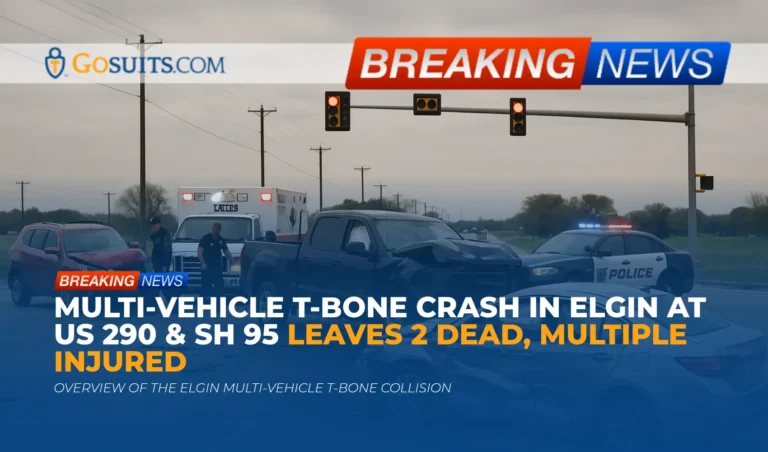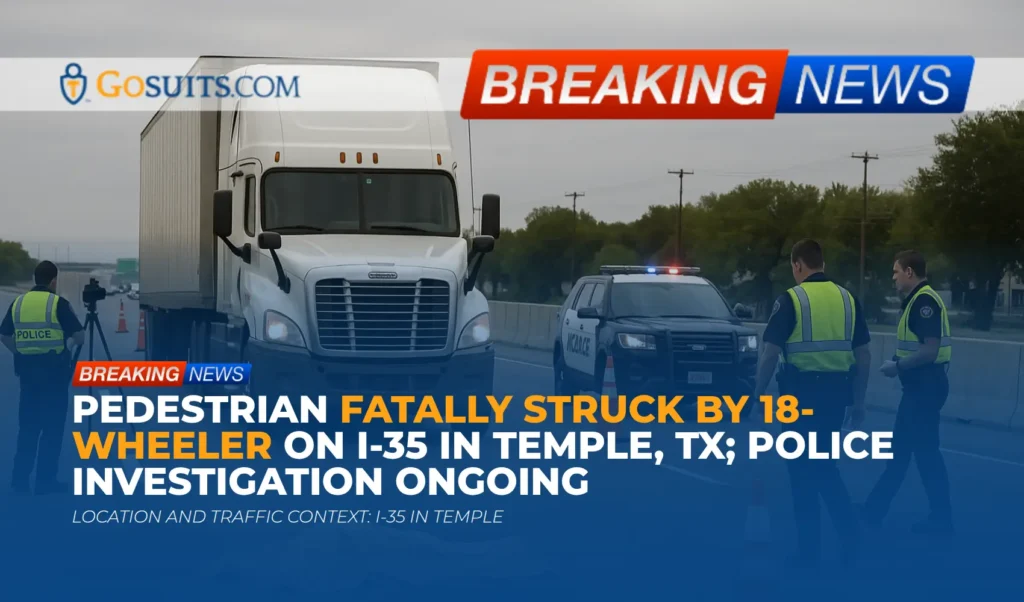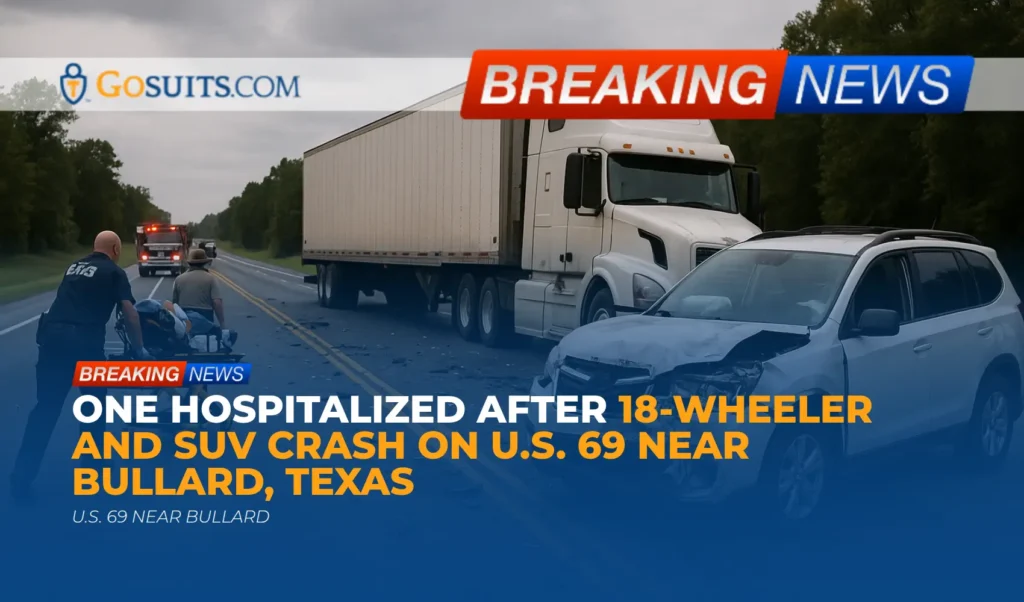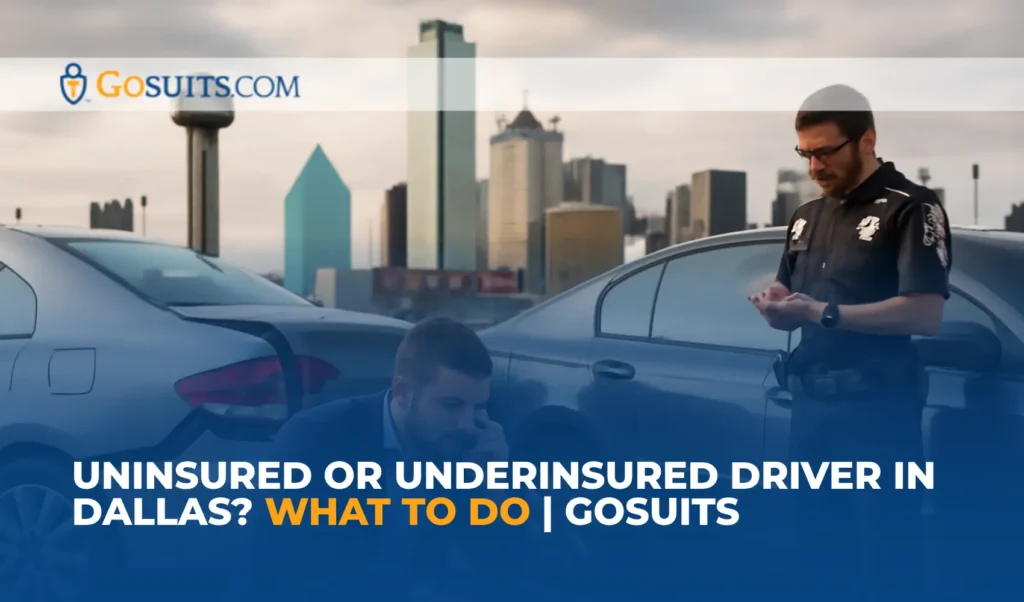- Overview of the Elgin multi-vehicle T-bone collision
- What is known so far
- Why side-impact crashes are especially dangerous
- How crash investigations typically proceed in Texas
- Potential civil liability pathways in Texas crashes
- Wrongful death and survival claims under Texas law
- Insurance coverage layers that may apply
- Key records to obtain and where to request them
- Local points of contact near Elgin for records and information
- Preserving evidence and understanding timelines
- Before speaking with insurance companies
- Roadway design and public entity considerations
- Safety reminders supported by national data
- Sources
- Commentary from Gosuits Elgin, Texas Personal Injury Attorney
- Why acting now matters
Overview of the Elgin multi-vehicle T-bone collision
A Saturday evening crash at the intersection of US 290 East and SH 95 South in Elgin resulted in multiple injuries and two tragic deaths. According to statements reported from local authorities, the collision was characterized as a T-bone type crash involving more than one vehicle and multiple patients. First responders from the Elgin Police Department, the Elgin Fire Department, ground EMS, and medevac helicopter services arrived on scene. Roads in the area were closed for roughly two hours while investigators worked to document and clear the scene.
Three people from one vehicle were transported to hospitals in Austin. Two of those individuals were pronounced deceased upon arrival. Investigators had not publicly released identities at the time of reporting, and the crash remains under active investigation. Authorities also noted that this incident is Elgin’s second fatal crash of 2025, bringing the year’s traffic death total in the city to four.
These early details are difficult to read. Side-impact collisions at major intersections are often sudden and devastating. Our thoughts are with everyone affected, and with the responders who worked to help on scene.
What is known so far
Based on available public statements and reporting, the following key facts are known at this time:
- Incident type and location: A multi-vehicle T-bone collision at US 290 East and SH 95 South in Elgin.
- Response: Elgin Police Department, Elgin Fire Department, Acadian EMS, and two medevac helicopters responded.
- Injuries and fatalities: Three people from one vehicle were transported to Austin hospitals; two were pronounced deceased at the hospital. Additional injury information for others involved has not been detailed publicly.
- Road closures: The intersection area was closed for approximately two hours for the on-scene investigation and cleanup.
- Status: The crash remains under investigation. Authorities indicated this is the second fatal crash in Elgin in 2025, totaling four traffic-related deaths for the year so far.
Further details such as contributing factors, roadway conditions, or traffic signal status have not yet been released. In these situations, law enforcement and crash reconstruction teams typically analyze physical evidence, vehicle data, witness statements, and any available camera or signal timing data before issuing final determinations.
Why side-impact crashes are especially dangerous
Side-impact or T-bone collisions can cause severe injuries because the struck vehicle has less space and structure to absorb energy on the side compared to the front or rear. National traffic safety agencies have long documented the elevated risk of serious harm in side-impact events. Research and safety guidance note the vulnerable position of occupants on the struck side, where intrusion into the passenger compartment is more likely.
National resources emphasize several themes:
- Limited side crush space: Vehicle sides typically have less energy-absorbing space compared to the front, which increases the risk of intrusion in a perpendicular impact. See general side-impact safety information from the National Highway Traffic Safety Administration at NHTSA.
- Intersection conflict points: Intersections create multiple conflict points where crossing and turning movements meet. The Federal Highway Administration outlines intersection safety priorities, noting that design, visibility, and traffic control all play roles in preventing severe crashes. See FHWA intersection safety.
- Speed and red-light running: In T-bone crashes at signals, investigators often examine speed management and compliance with traffic control devices. Texas law governs obedience to traffic signals under the Transportation Code, including red, yellow, and green indications. See Texas Transportation Code Chapter 544.
While improved technology such as side airbags and reinforced door structures help, side impacts remain among the most hazardous crash types, particularly at high speeds or when a larger vehicle strikes a smaller one.
How crash investigations typically proceed in Texas
When a serious crash occurs at a state highway intersection, multiple agencies may be involved in the response and investigation. The local police department often leads the on-scene investigation within city limits, while state agencies may assist when needed. Typical steps include:
- Scene control and lifesaving: Securing the intersection, providing medical aid, and coordinating transport by EMS or air medical services.
- Evidence documentation: Photographing the scene, mapping vehicle positions, measuring skid or yaw marks, documenting roadway conditions, and collecting debris patterns.
- Witness statements: Interviewing drivers, passengers, and bystanders to determine traffic movements, signal indications, and speeds observed.
- Vehicle examinations: Reviewing vehicle damage patterns, checking for mechanical defects, and downloading event data recorder (EDR) information when available.
- Traffic control devices: Confirming the presence and proper function of signals or signs, and when appropriate, requesting signal timing records or maintenance logs.
- Toxicology and medical findings: In fatal incidents, Texas law provides for inquests and possible autopsies to help determine cause and manner of death. See Texas Code of Criminal Procedure Chapter 49 on inquests by justices of the peace and medical examiners at CCP Chapter 49.
These steps can take days to weeks, and final reports may be issued after all analyses are complete.
Potential civil liability pathways in Texas crashes
Without assigning fault in this still-developing situation, it is appropriate to outline common civil liability issues that arise after intersection collisions in Texas. Responsibility for crash losses can involve one or more of the following:
- Driver negligence: Allegations may involve failure to obey traffic control devices, speeding, inattention, unsafe turns, or failure to yield. Applicable traffic control laws are generally found in the Texas Transportation Code.
- Vicarious liability: If a driver was operating a vehicle in the course of employment, the employer may face claims under respondeat superior. Coverage questions then extend to commercial auto insurance policies.
- Vehicle defects: In limited circumstances, a defect in brakes, steering, or safety systems could be implicated, potentially raising product liability issues.
- Roadway conditions and signals: Where evidence suggests signal malfunction, inadequate signage, obstructed sightlines, or other roadway issues, potential claims may involve a governmental unit. However, claims against public entities are constrained by the Texas Tort Claims Act, which sets strict notice and liability limits. See CPRC Chapter 101.
Civil pathways depend on complete fact development. The investigation record, physical evidence, and official reports form the backbone of any civil claim assessment.
Wrongful death and survival claims under Texas law
In fatal collisions, Texas law provides two primary civil mechanisms: wrongful death claims brought by certain family members, and survival claims brought on behalf of the decedent’s estate. These are distinct but related.
- Wrongful death: Texas Civil Practice and Remedies Code Chapter 71 allows the spouse, children, and parents of the deceased to bring a claim for losses they suffered as a result of the death. See CPRC Chapter 71.
- Survival: A survival claim allows the decedent’s estate to pursue the personal injury claim the decedent could have brought if they had lived, including conscious pain and suffering and medical expenses incurred before death. See CPRC § 71.021.
- Limitations period: In general, Texas provides a two-year limitations period for wrongful death and personal injury actions, though exceptions may apply in specific circumstances. See CPRC § 16.003.
It is important to understand who has standing to file, how the estate is opened if needed, and how damages are categorized. Families often benefit from careful coordination between potential wrongful death beneficiaries and the personal representative handling any survival claim.
Insurance coverage layers that may apply
Crashes at major intersections often involve several possible insurance layers. Understanding what may be available can help with planning and documentation:
- Liability coverage of at-fault driver: Pays bodily injury and property damage for which the insured driver is legally responsible, up to policy limits.
- Uninsured/underinsured motorist coverage: May apply when the at-fault driver has no insurance or insufficient limits. In Texas, UM/UIM is commonly offered and can be rejected only in writing. See consumer guidance from the Texas Department of Insurance at TDI.
- Personal Injury Protection: PIP is offered in Texas and provides no-fault benefits for medical bills and certain lost income, depending on the policy. See TDI auto insurance basics.
- Medical Payments coverage: Optional coverage that can reimburse medical costs up to policy limits, regardless of fault.
- Commercial policies: If a vehicle was used for business, a commercial auto or motor carrier policy may be implicated.
Insurance evaluations are fact specific. Policies, endorsements, exclusions, and coordination with health insurance can materially affect outcomes.
Key records to obtain and where to request them
After a serious crash, certain official records can help families and legal representatives understand what happened and protect civil claims. The following are commonly requested in Texas, with links to state or county resources:
- Texas Peace Officer’s Crash Report (CR-3): The official crash report is typically available within days or weeks. It can be purchased online through state systems. See Texas Department of Public Safety crash records information at DPS Crash Reports. TxDOT’s purchase portal is operated through the Crash Records Information System (CRIS).
- Traffic signal timing and maintenance logs: When relevant, requests can be made to the entity responsible for the intersection. For state highways, TxDOT may maintain certain records. Requests can be submitted under the Texas Public Information Act; see guidance from the Office of the Attorney General at Making a public information request.
- 911 audio, CAD logs, and dispatch records: These can be requested from the public safety answering point or municipality under the Public Information Act, subject to exemptions. The Attorney General’s guidance above explains how to make requests.
- Medical Examiner or Inquest records: Depending on jurisdiction, an autopsy and investigative files may be held by a county medical examiner or by a justice of the peace inquest court. See Texas Code of Criminal Procedure Chapter 49 at CCP Chapter 49 for the legal framework.
- EMS patient care reports: EMS run sheets may be obtainable through the EMS provider, subject to medical privacy laws. Hospital records can be requested from the facility’s Health Information Management department with appropriate authorization.
- Toxicology results: In fatalities, toxicology testing may be part of the medical examiner’s file. Release often follows the completion of analysis and is governed by state law and county policy.
When making public information requests in Texas, it is helpful to include the date, time window, location, and incident number if available. Agencies may take up to ten business days to respond with records, cost estimates, or applicable exemptions.

Local points of contact near Elgin for records and information
Elgin straddles parts of Bastrop and Travis counties, and serious crashes at US 290 and SH 95 can involve city, county, and state agencies. The following government offices are often relevant for records and information, depending on where the investigation is assigned and where any inquest is handled:
- Texas Department of Public Safety: State-level crash report access. See DPS Crash Reports.
- TxDOT: For requests related to state highway traffic signal timing or roadway information, submit a Public Information Act request. See Attorney General guidance on requests at Public Information Act requests.
- Travis County Medical Examiner’s Office: Provides medicolegal death investigation services for Travis County and certain contracted jurisdictions in Central Texas. Information on reports and policies is available at Travis County Medical Examiner.
- Bastrop County: Justice of the Peace courts conduct inquests when applicable, and county offices can direct requestors to the proper point of contact. County portal: Bastrop County.
- City records and dispatch: Incident reports, 911 audio, and CAD logs are generally requested from the municipality under the Public Information Act. See statewide guidance at Attorney General Open Government.
Which office to contact depends on who led the investigation, where any inquest is opened, and whether state agencies maintain specific technical records. When in doubt, a concise written request to the city or county public information officer asking which entity holds the desired record can save time.
Preserving evidence and understanding timelines
Timely preservation of evidence can make a meaningful difference in how civil claims are evaluated. Practical steps commonly considered after a serious crash include:
- Vehicle preservation: Ensure damaged vehicles are not destroyed before inspections or downloads of event data recorders can be completed. Written preservation requests, sometimes called spoliation letters, can be used to notify custodians to keep vehicles and parts intact.
- Scene and witness documentation: Early collection of photographs, videos, and contact information for witnesses can aid later reconstructions.
- Record retention notices to businesses: Nearby businesses may have exterior cameras that overwrite footage quickly. Promptly request preservation of relevant footage with precise time windows.
- Public records follow-up: Track requests for crash reports, 911 audio, and any available traffic signal records.
- Medical documentation: Keep discharge summaries, imaging, and billing statements organized to help demonstrate the extent of injuries and costs.
Texas law imposes time limits on civil claims. The general two-year limitations period for personal injury and wrongful death actions is codified at CPRC § 16.003. If a potential claim involves a governmental unit, strict notice requirements may apply; many claims require written notice within six months of the incident under CPRC § 101.101, and some local charters can set shorter deadlines. These timeframes are general references and can have exceptions in specific situations. Acting promptly helps ensure no deadlines are missed.
Before speaking with insurance companies
Insurance carriers often seek early statements. What people say in the first days after a serious collision can affect later claim evaluations. It is generally wise to:
- Consult an attorney first: Before making a claim or giving a recorded statement to any insurer, consult a qualified attorney for a free consultation to understand rights and obligations. Statements can be used to challenge liability or minimize damages later.
- Review coverages: Identify all policies that may apply, including household UM/UIM, PIP, MedPay, and any commercial coverage if a company vehicle was involved. See TDI consumer auto insurance.
- Be cautious with medical authorizations: Broad medical releases can allow carriers to access years of records. Carefully evaluate the scope of any authorization before signing.
- Document all communications: Keep a written log of calls and letters and save claim numbers, adjuster names, and dates.
These steps help prevent misunderstandings and protect the integrity of any future civil claim.
Roadway design and public entity considerations
US 290 and SH 95 are significant corridors with high traffic volumes. At complex intersections, investigators sometimes review whether engineering or maintenance played any role. Key considerations may include:
- Signal function and timing: Was the signal operating properly, and were timing plans appropriate for conditions. Requests for timing data are typically directed to the maintaining agency.
- Sight distance and signage: Vegetation, lighting, and sign placement can affect visibility. Maintenance records and inspection histories can be relevant.
- Pavement condition and markings: Skid resistance, lane markings, and stop bar placement are part of a holistic review.
Claims involving public entities are limited by the Texas Tort Claims Act. There are specific notice requirements, category limitations, and damage caps, and liability depends on the precise facts and statutory provisions. See CPRC Chapter 101 for the statutory framework.
Safety reminders supported by national data
Although the facts of this crash are still under investigation, several general safety themes are supported by national and state data:
- Intersections are high-risk points: The Federal Highway Administration highlights that reducing conflict points and improving traffic control at intersections are central to lowering crash severity. See FHWA.
- Side impacts carry elevated injury risk: NHTSA’s side-impact resources explain occupant vulnerability on the struck side and the protective value of side airbags. See NHTSA.
- Texas crash burden remains significant: TxDOT’s statewide crash facts reflect the continuing toll of serious crashes. See TxDOT Crash Facts for the most recent annual data posted by the state.
Safe speeds, focus behind the wheel, and strict compliance with traffic signals remain essential at busy junctions like US 290 and SH 95.
Sources
- Texas DPS Crash Records: Crash Reports
- Texas Attorney General: Making a Public Information Request
- Texas Transportation Code Chapter 544: Traffic Signals
- Texas CPRC Chapter 71: Wrongful Death and Survival
- Texas CPRC § 16.003: Limitations for Personal Injury and Wrongful Death
- Texas CPRC Chapter 101: Texas Tort Claims Act and § 101.101 Notice
- Texas Code of Criminal Procedure Chapter 49: Inquests
- Travis County Medical Examiner’s Office
- Bastrop County Official Site
- Texas Department of Insurance: Auto Insurance Guide
- NHTSA: Side Impacts
- FHWA: Intersection Safety
- TxDOT: Statewide Crash Facts

Commentary from Gosuits Elgin, Texas Personal Injury Attorney
First and foremost, our hearts go out to those affected by this collision and to the loved ones grieving the two lives lost. This commentary is shared for educational and general informational purposes, to help the community understand the civil considerations that often follow a severe intersection crash.
Based on what is publicly known, this incident occurred at a major junction where crossing movements and higher speeds converge. In similar cases, the key civil questions typically center on right-of-way at the time of impact, speed, attention to traffic control devices, and whether roadway or signal issues contributed. Side-impact crashes can unfold in seconds, and occupants on the struck side face serious risks even with modern safety features. A full understanding requires the official crash report, scene documentation, and any available technical records such as signal timing data and EDR downloads.
In our experience, insurance carriers and, where applicable, corporate defendants move quickly to gather information. That speed can create an imbalance. Adjusters may ask for broad medical releases or recorded statements early, before the full picture is clear. Corporations and insurers are well-versed in policy language, exclusions, and limits, and they may rely on technicalities or incomplete information to minimize responsibility. This is why seeking a free consultation with a seasoned attorney before giving statements or signing authorizations is so important. It helps ensure that rights are understood and that early decisions do not unintentionally weaken potential claims.
When fatalities are involved, families face a parallel set of steps: obtaining official reports, opening an estate if a survival claim is contemplated, coordinating among wrongful death beneficiaries, and tracking statutory deadlines. Clear, careful guidance can make these steps more manageable while the investigation proceeds.
Why acting now matters
Time is a quiet but decisive factor after a catastrophic crash. Evidence can be lost and deadlines can pass. The most constructive actions in the near term generally include:
- Secure official records: Order the Texas Peace Officer’s Crash Report when available, and submit Public Information Act requests for 911 audio and dispatch logs. If signal function is at issue, request timing and maintenance data from the maintaining agency.
- Preserve vehicles and data: Ensure all involved vehicles remain available for inspection and EDR downloads. Send written preservation notices to custodians, including tow yards and insurers.
- Capture perishable evidence: Request nearby businesses to preserve camera footage for the relevant time window. Many systems overwrite in days.
- Organize medical documentation: Keep hospital records, EMS reports, and billing statements together to support any later benefits or claims review.
- Assess all insurance layers: Identify liability, UM/UIM, PIP, MedPay, and any commercial coverages. Before initiating claims or giving statements, seek a free consultation with an attorney to understand how policy language and recorded interviews may affect outcomes.
- Calendar timelines: Note the general two-year limitations period for personal injury and wrongful death claims in Texas and, where a potential claim involves a governmental unit, the short notice-of-claim deadlines referenced in the Texas Tort Claims Act.
Acting promptly helps ensure that key records are secured, evidence is maintained, and critical legal timeframes are preserved while the official investigation runs its course.






